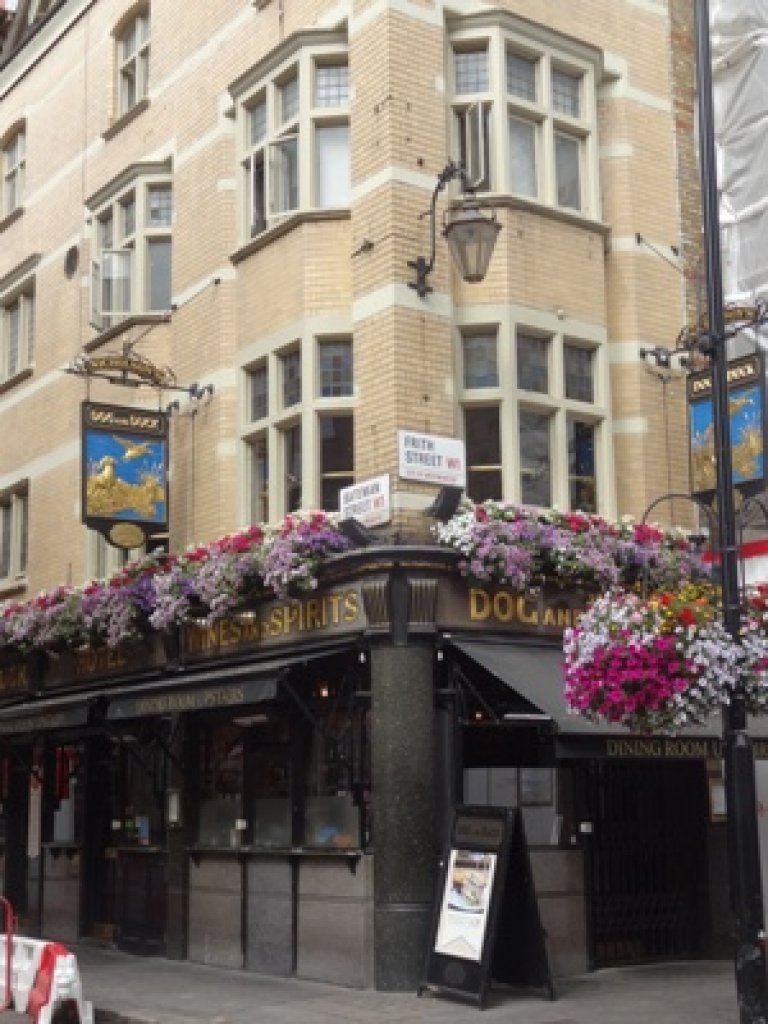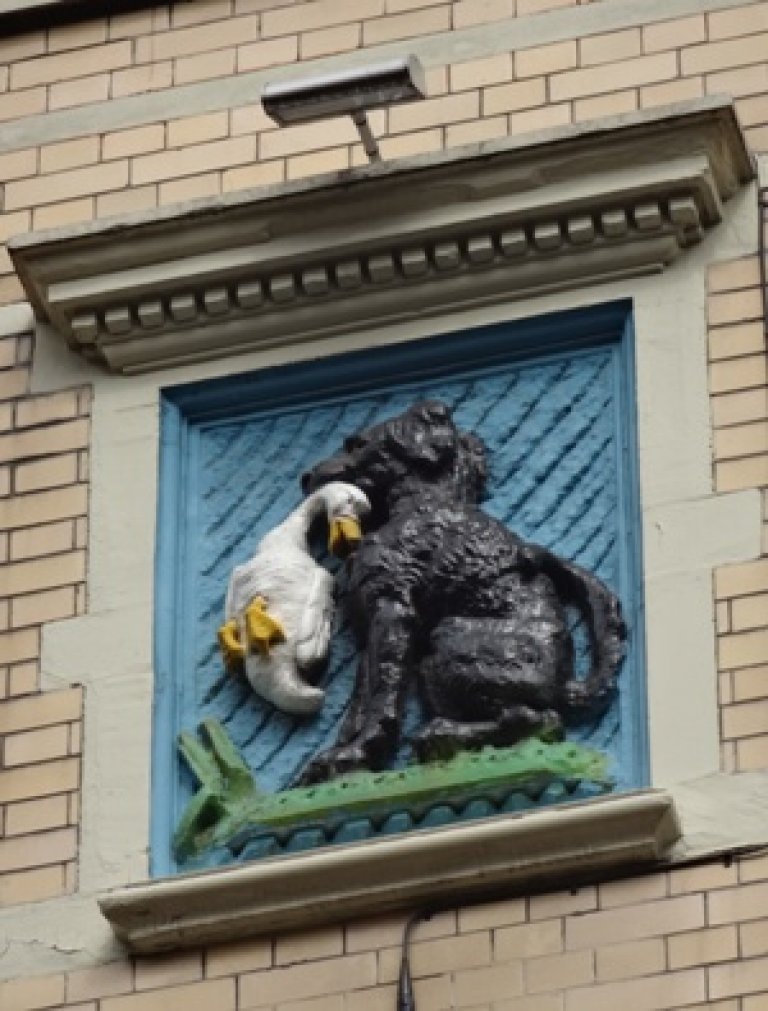Dog & Duck
90 Berwick StreetSoho
W1F 0QB
This pub is both a grade II listed building and it is on CAMRA’s National Inventory and the description is as follows: “A gorgeous small and very popular (i.e. packed at busy times) Soho pub. It was built in 1897 to designs by architect, Francis Chambers. The exterior has glazed brick upper floors incorporating a stone carving of the eponymous fauna (note also the delightful mosaic thereof at the Frith Street entrance). The ground floor has polished granite and larvikite facings which probably date from a c.1930 makeover. The interior is also a mixture of Victorian and inter-war work – the former represented by extensive wall-tiling and a couple of large, framed advertising mirrors promoting long-vanished tobacco and mineral water products. The more restrained work of around 1930 is found in the woodwork of the left-hand part. This was also probably the time when the pub was opened up and took its present single-space layout. Its Victorian predecessor would undoubtedly have had several divisions but it is hard to work out exactly how things were. The present servery now blocks a former outside door. The superstructure on the counter is probably an early example of a feature that became commonplace from the 1960s and here is no doubt explained by the desperate need to create shelf space in this tiny pub.
History in the area: In the 16th century Soho was Henry VIII’s hunting ground. In the following century the area was home to religious refugees including Huguenots who took over a chapel in Hog Lane (later Crown Street). Nowadays the site is covered by St Martin’s School of Art, Charing Cross Road. Latterly the sex industry, although not dominating the area, has become associated with it.”
The listing description is as follows: “Public house. 1897, by Francis Chambers for Cannon Brewery. Cream glazed brick with white limestone dressings and bands to window heads and sills; hipped plain tile roof. 4 storeys and attic. One-bay elevation to Frith Street and 3-bay elevation to Bateman Street. Bracketed egg and dart cornice over ground-floor marble fronts: fascia with inscribed lettering above segmental-arched "clerestory" windows with decorative cut glass and segmental-arched windows and half-glazed panelled doors with original fittings. Two-storey canted bay windows with 3-light stone-mullioned and transomed windows, one to Frith Street and two to Bateman Street, are sunk into wall plane; left-hand bay of Bateman Street elevation has 3-light moulded stone-mullioned windows with leaded-lights; third floor has segmental-arched 2-light transomed windows, and dentilled cornice over plaque of dog and duck. Stepped cornice; gable dormers with bargeboards. Interior: an exceptional survival of a small late Victorian pub interior with tilework, mirrors and high-quality joinery. Long and narrow space with front and back bars divided by staircase to upper floors. Lavish tilework to walls; Roman-style mosaic floor depicting dog alarming duck to entry. Front bar has original bar set opposite fine group of mirrors, including narrow mirror depicting dog alarming duck to right of two principal mirrors advertising Virginia cigarettes and Brighton seltzer water signed "S Trenner and Son". Back bar has large overmantle mirror above marble fireplace, to right of door with cut glass decoration set in panelled screen and leading to casement.”
The WhatPub link is here: WhatPub/Dog & Duck
The Pub Heritage Group link is here: PHG/Dog & Duck
The Dog & Duck featured on the Evening Crawl of Soho in February 2002, the Evening Crawl of Soho in December 2004, and the Saints and Sinners: Evening Crawl of Covent Garden, Fitzrovia and Soho in April 2016.





